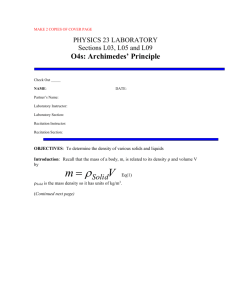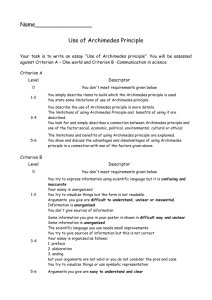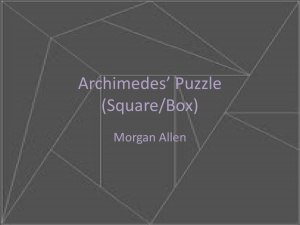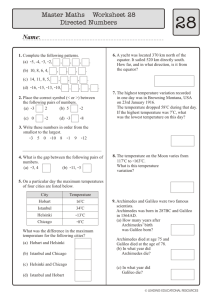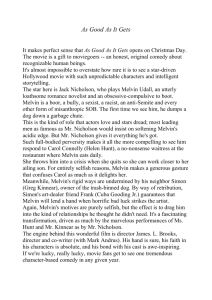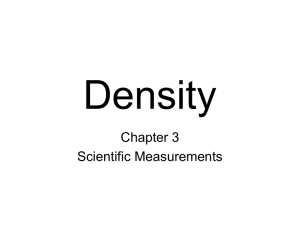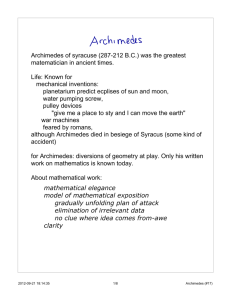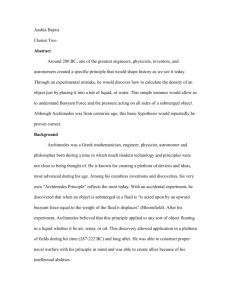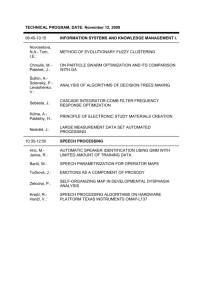Denisty Pre lab and post lab
advertisement
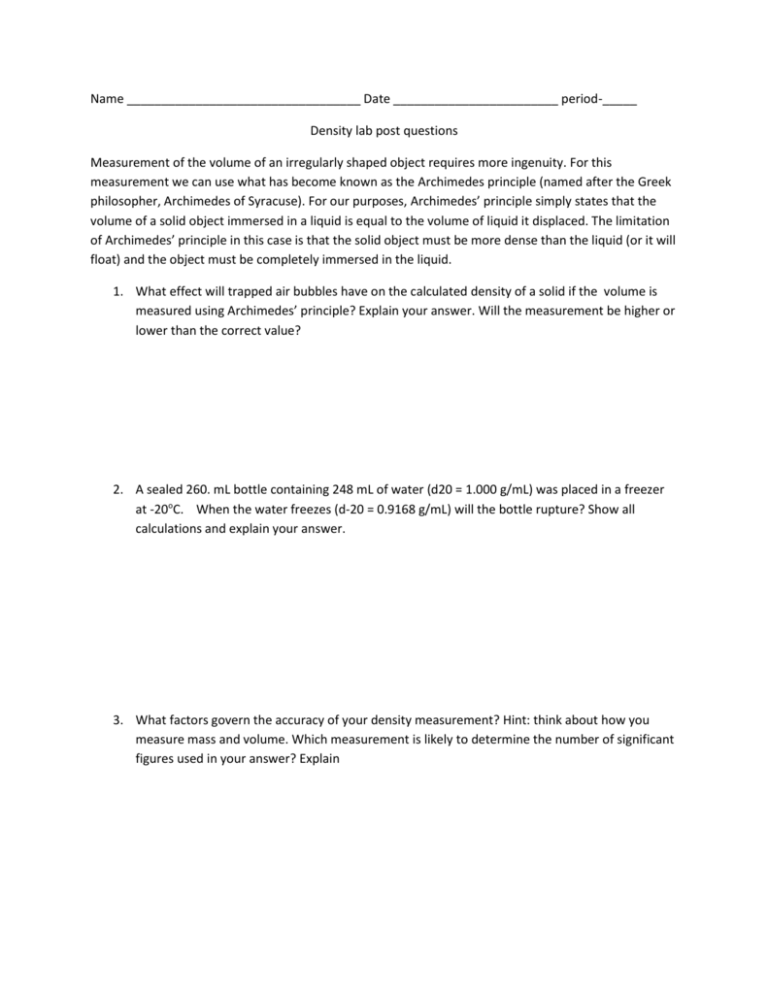
Name __________________________________ Date ________________________ period-_____ Density lab post questions Measurement of the volume of an irregularly shaped object requires more ingenuity. For this measurement we can use what has become known as the Archimedes principle (named after the Greek philosopher, Archimedes of Syracuse). For our purposes, Archimedes’ principle simply states that the volume of a solid object immersed in a liquid is equal to the volume of liquid it displaced. The limitation of Archimedes’ principle in this case is that the solid object must be more dense than the liquid (or it will float) and the object must be completely immersed in the liquid. 1. What effect will trapped air bubbles have on the calculated density of a solid if the volume is measured using Archimedes’ principle? Explain your answer. Will the measurement be higher or lower than the correct value? 2. A sealed 260. mL bottle containing 248 mL of water (d20 = 1.000 g/mL) was placed in a freezer at -20oC. When the water freezes (d-20 = 0.9168 g/mL) will the bottle rupture? Show all calculations and explain your answer. 3. What factors govern the accuracy of your density measurement? Hint: think about how you measure mass and volume. Which measurement is likely to determine the number of significant figures used in your answer? Explain Name ________________________________________Date ____________ period _______ Experiment: Density Pre-lab assignment 1. On a recent excursion chemistry student extraordinaire, Melvin Blackthorne, found a gold colored coin at a flea market. The vendor priced the coin (just for you) at $200, claiming it was pure gold. Being a well equipped traveler Melvin pulled out a graduated cylinder and a battery powered balance. The coin had a mass of 18.82 g and raised the water level in the cylinder from 5.2 mL to 7.3 mL. What is the density of the coin? Show all calculations. 2. While on his trip Melvin was fortunate enough to take a sea voyage into the Antarctic. When the ship had a close encounter with an iceberg, Melvin estimated the volume of the iceberg at 35,000m3 . Given that the density of ice is 0.9168g/cm3 what is the mass of the iceberg in metric tons (1 metric ton = 1000 kg)? 3. In your own words explain how Archimedes’ principle can be used to measure the volume of an irregularly shaped solid. 4. Upon returning home, Melvin got involved in a water fight with his girlfriend, Melinda. He observed that the water balloon he was holding was a nearly perfect sphere with a diameter of 10.7 cm. Since the volume of a sphere is V = 4/3πr3 , what volume of water (d = 1.000g/mL) is about to impact Melinda’s head? Name __________________________________________ Date _________________ period ______ College Chemistry Lab: Density Calculations Part 1: Part 2:
